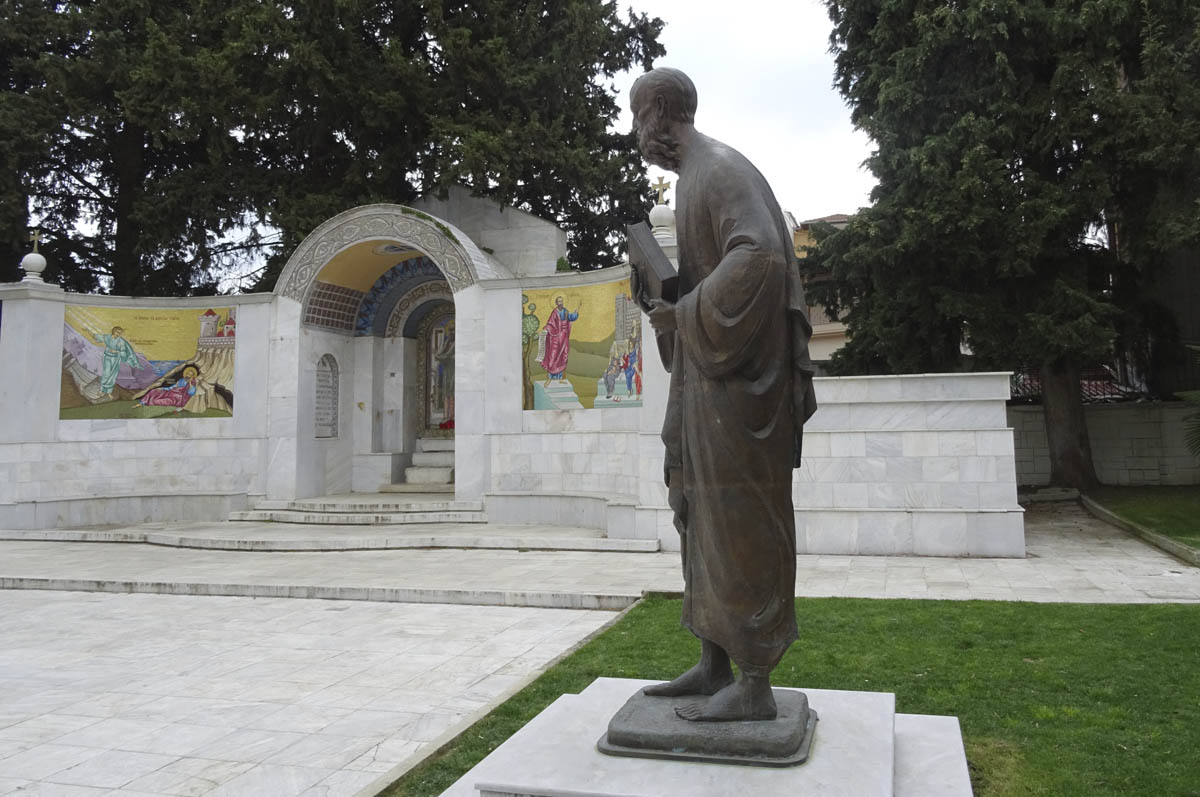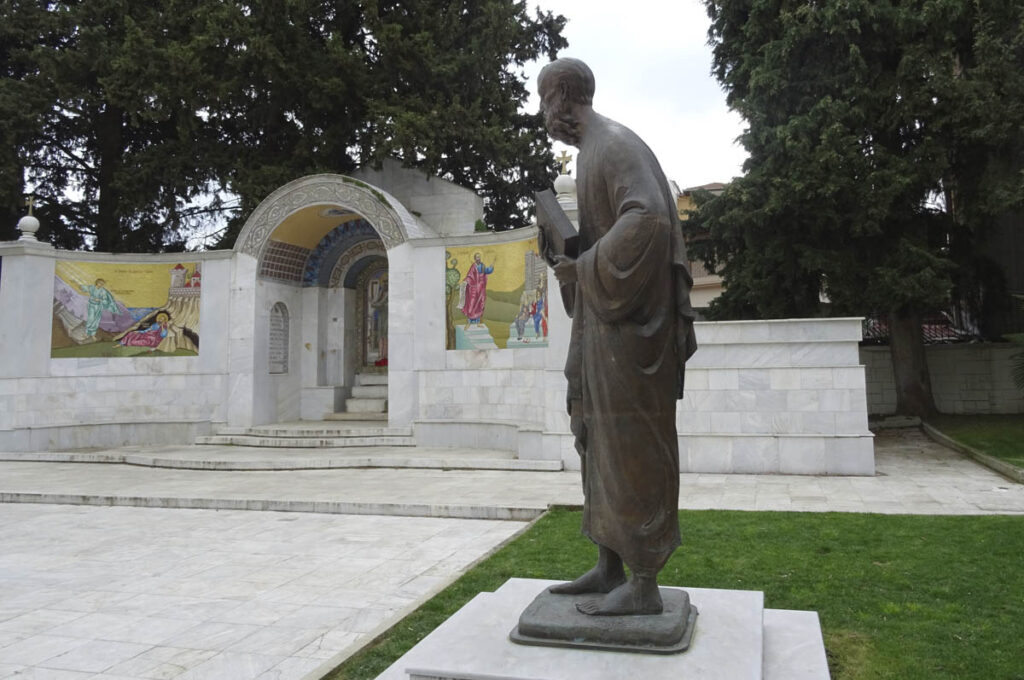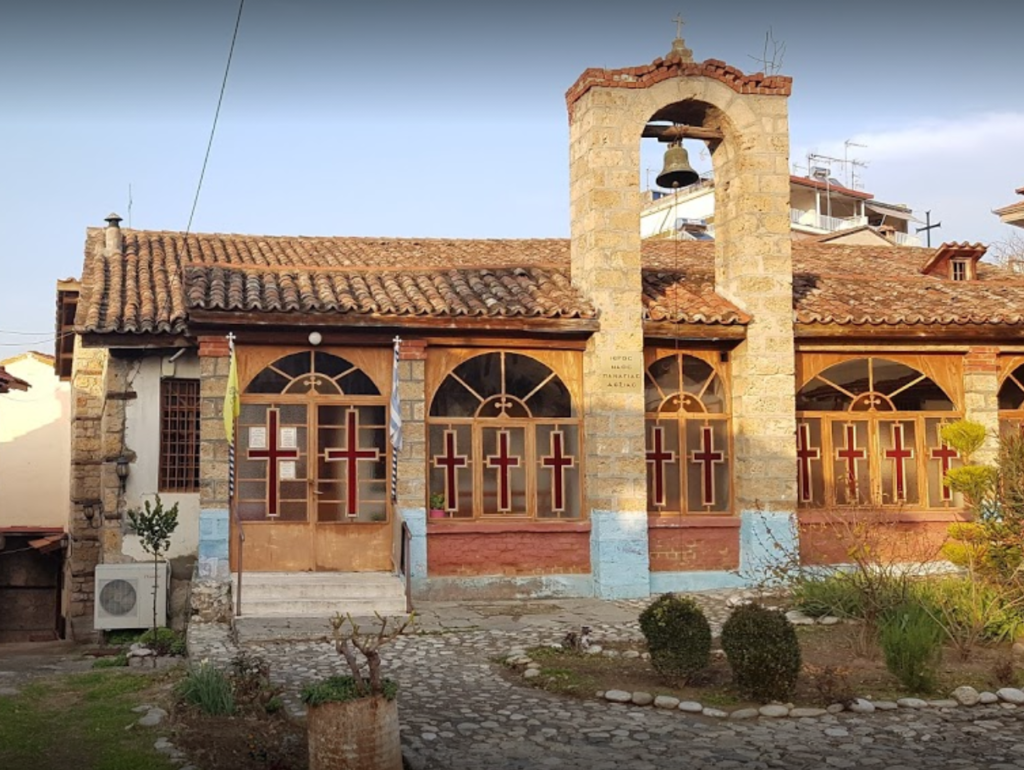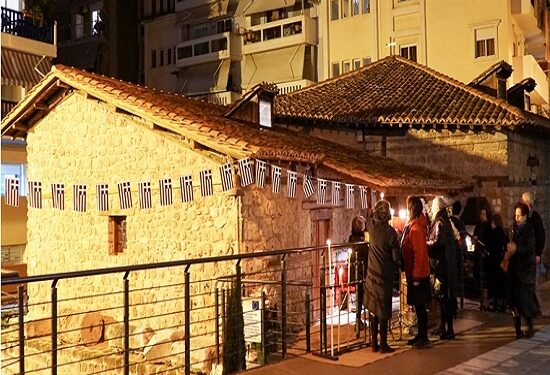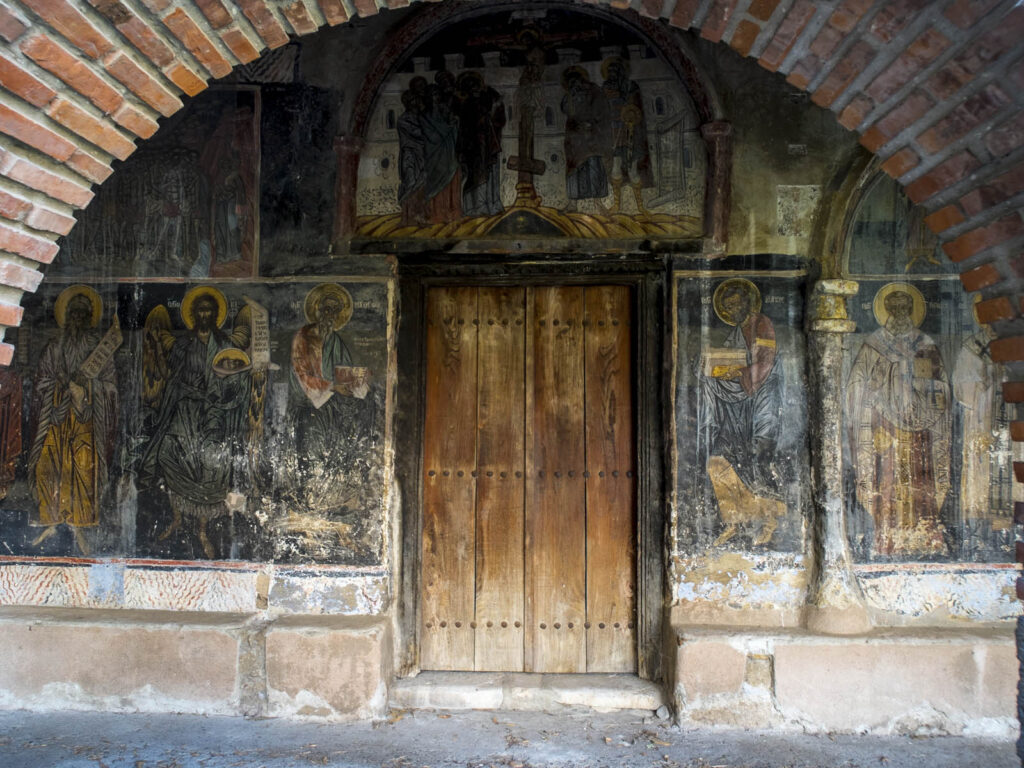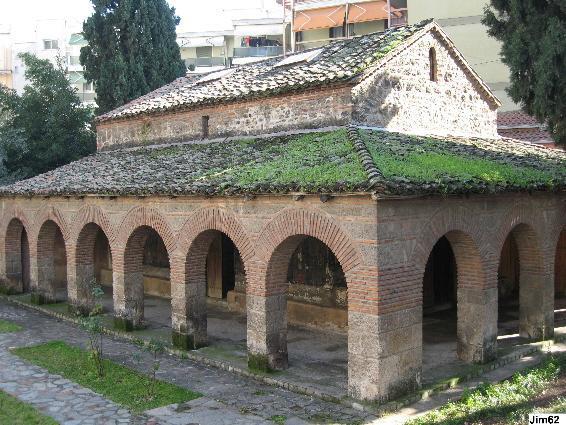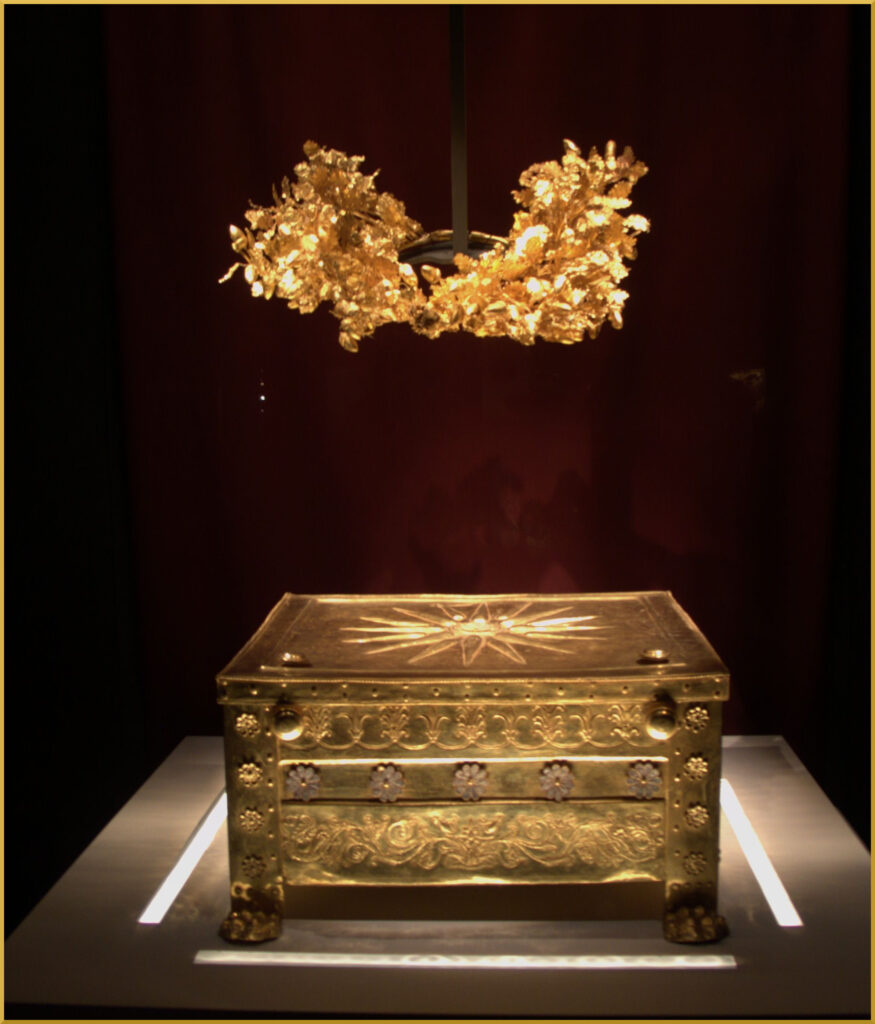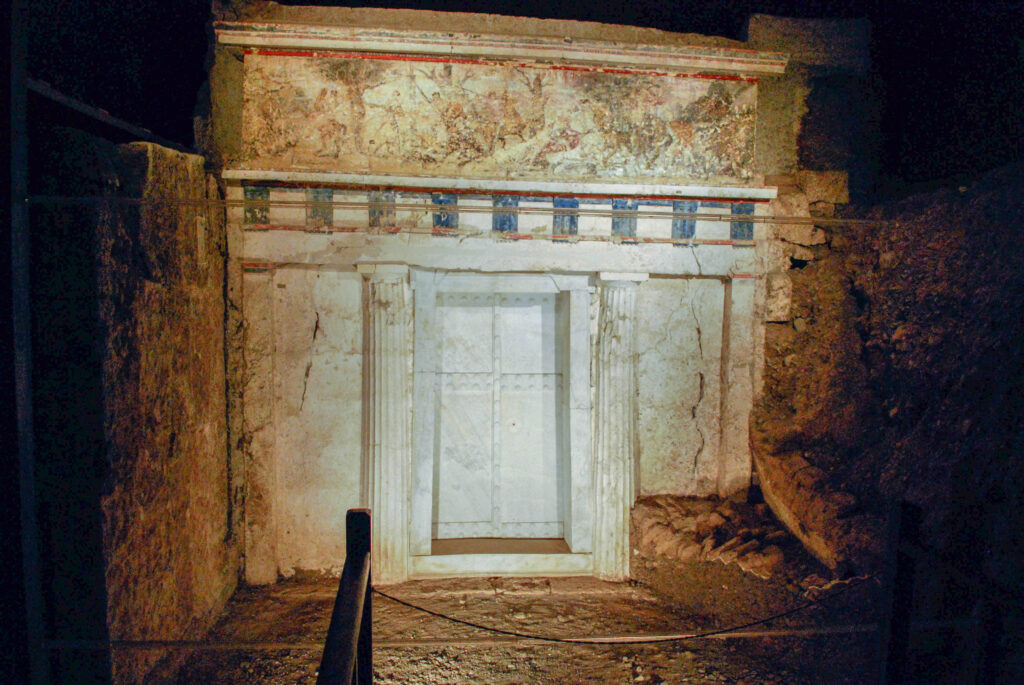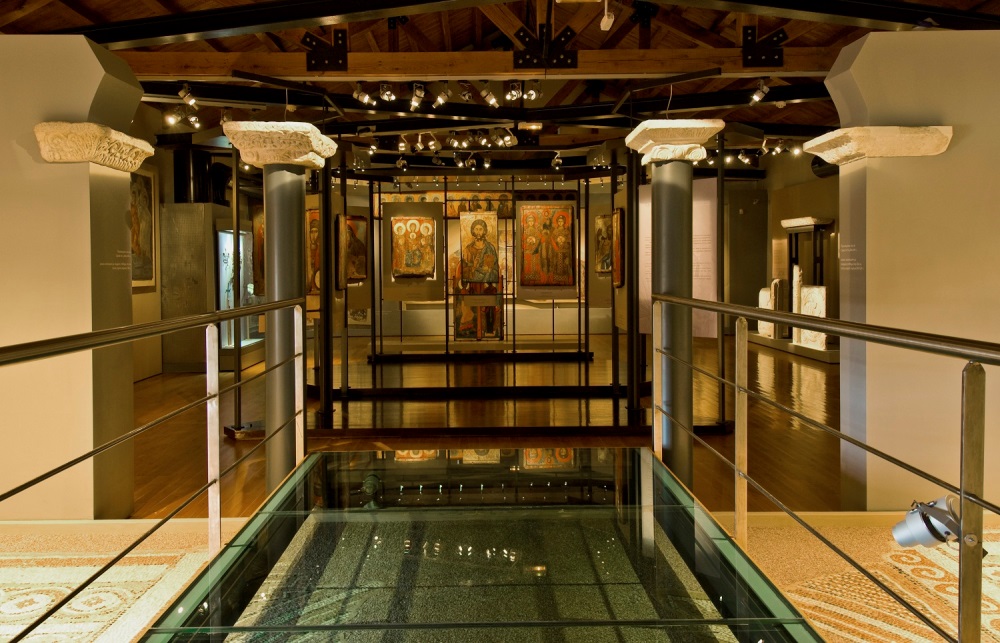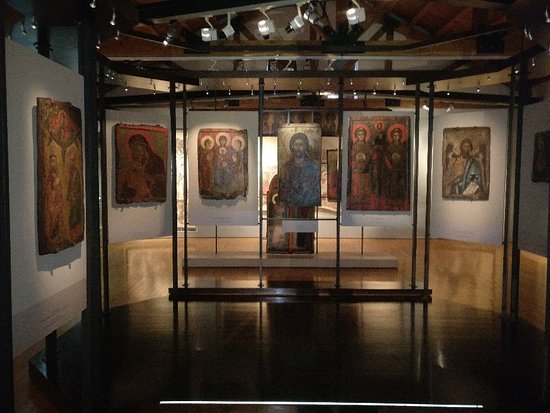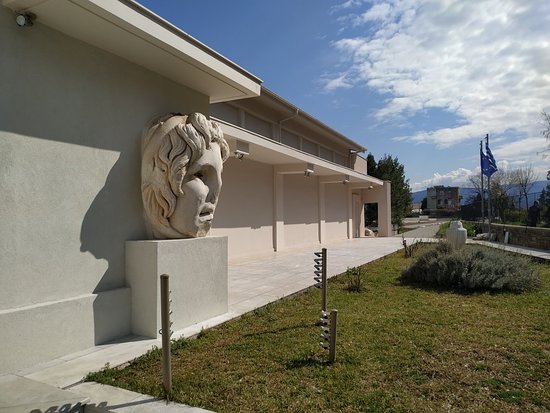If you are looking to visit a beautiful town that is bursting with rich history, culture, museums and archaeological sites, look no further than Veria.
Part One | History
By Eleni Orfanidou
Located in Macedonia, it is set on the foothills of Mount Vermion and crossed by the River Tripotamo. From the 11th to the 14th century it was the third most important city of the Byzantine Empire, after Constantinople and Thessaloniki.
Now known as “Little Jerusalem,” the city is filled with an impressively large number of Byzantine, post-Byzantine churches as well as lots of archaeological sites and historical museums.
Here is a list of must-see places for when you visit!
-
Step of the Apostle Paul -
Church of Panagia Dexia @elenipelekidou
-
Agios Patapios -
Church of Resurrection -
Church of Resurrection
Religious Sites
Step of the Apostle Paul is a historical monument of global interest and a source of religious tourism for the city. Every season of the year people from all over the world arrive in Veria to see up close the traces of Apostolos’ tour.
Agios Patapios was the center of ancient, but also of the early Christian Veria, as it was located on the east side of the main road, which led from the north gate of the fortified enclosure inside the ancient city. The most extensive ensemble was excavated in the ruins of buildings of the Roman period, which provides a very important picture of the organization of the city during the early Christian period. Discovered here were parts of a building complex with extensive mosaic floors, an early Christian baptistery, as well as part of the diocese.
Byzantine churches
Veria is known for its numerous Byzantine and post-Byzantine churches (about 48 surviving today) and 72 originally, resulting in the name of a ‘Small Jerusalem’, as well as unique collections of Byzantine icons. Particularly famous is the Church of the Resurrection. Other important temples are the Church of St. John the Theologian (13th century), the Church of Saints Kirikos and Ioulitis (16th century) and the Church of Saints Peter and Paul (11th century.) Make sure to pay a visit to the church of Panagia Dexia, built in the 19th century, in place of a former church of the 14th century. Take a look at the easternmost surviving sector of the former church where you can gaze upon the sanctuary’s niche and wall paintings.
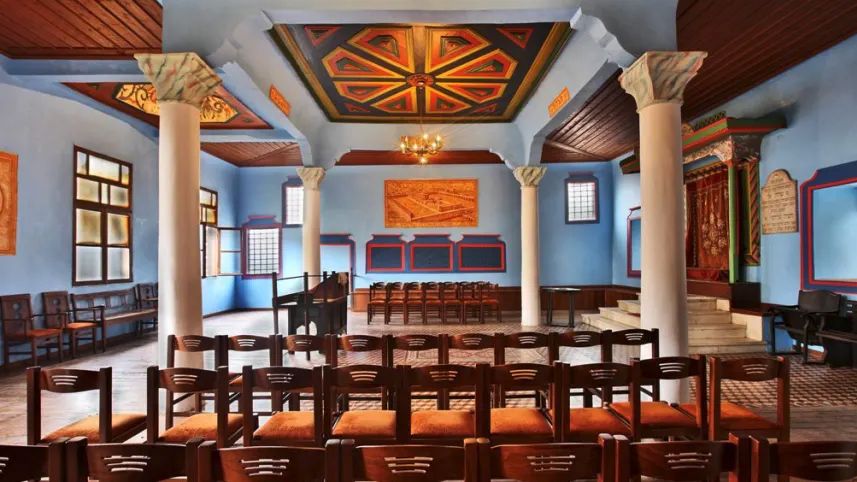
Jewish Synagogue
The Jewish Quarter was built in 1850 and is located next to the Tripotamos River, boasting cobblestone streets and grand mansions. It is one of the oldest Synagogues in Europe and in the heart of the Jewish quarter is Barbuta, the stone building of the Synagogue, with ornate interior decoration. Today it is closed and open only when Jewish people travel and come to pray. The Apostle Paul preached here when he visited the city in 51 and 57 AD.
Archaeological Sites
Vergina: A short distance from Veria is Vergina, built geographically on the site of the ancient Aigai, where the excellent archaeologist Manolis Andronikos excavated and discovered the ancient tomb of King Philip V. The modern underground museum of Vergina is astonishing. Royal tombs and exhibits from the entire history of Macedonia are found here. At the Royal Tombs Museum, you can admire many findings and wall paintings in an impressive underground construction. Philip II’s tomb and the magnificent golden urn are the items that stand out.
-
The golden larnax and the golden grave crown of Philip II -
Facade of Philip II
Museums
Byzantine Museum: The prosperity of Veria during the Byzantine era is presented in every detail. It is housed in the old Mill of Markos, near the city walls. Finds include mosaics, manuscripts, pottery, wood carvings and coins.
Archaeological Museum: Recently renovated, it attracts enormous archaeological interest from all over the world and offers a flashback to the rich past of Veria, while referring to the historical grandeur of the Ancient City of those years. In the three rooms of the Museum one can see findings from the Paleolithic era to the period of Ottoman rule.
Museum of Education: There is a permanent exhibition, which presents the evolution of education and its teaching aids in Greece, from the time of waxed plates, parchments, ancient ink and conveyors to the age of notebooks, desks and computers.
Museum of Modern History and Art: Known as Vlachogiannio, it exhibits in a unique way the flourishing of art and the progress of modern history in this place.
-
Byzantine Museum -
Byzantine Museum -
Archaeological Museum
Folklore Museum: It is housed in the old mansion of Sarafoglou. The museum focuses on the folklore of the area, highlighting the rich history of the habits of the inhabitants of Veria. The material of the museum is of astonishing interest, while at the same time it is housed inside an old mansion, which allows you to see the architecture of the city inside.
Vlach Folklore Museum: The Museum is housed in a listed building next to Orologiou Square, highlighting the cultural heritage of the Vlachs. In the museum there are exhibits with traditional costumes, rich photographic material and a collection of traditional material related to the Vlach tradition of the area. The purpose of the museum is the preservation, promotion and dissemination of elements of Vlach culture. For this reason, events are held in the area accompanied by traditional music.
*Eleni Orfanidou is a school teacher who was born and raised in Veria and is very proud of the local traditions, culture and history of her home town. Over the coming weeks, Eleni will be sharing with IN+SIGHTS GREECE readers what to see and do when visiting Veria.

